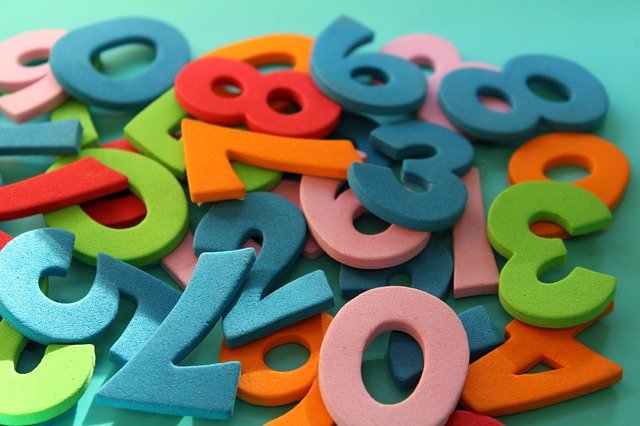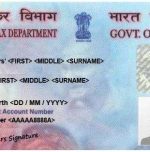How to Convert Fractions Into Percents?

Remember the way your mother divides a cake equally among you and your siblings? That’s one of the many real-world examples of fractions. As simple as it may sound, fractions can become a nightmare for students when solving by themselves.
Worry no more. Here, at CueMaths, we present a step-by-step guide for you to master fractions in a matter of minutes. Remember, as a student, it is highly essential for you to understand the concept of fractions as it helps you grasp the math of numbers.
Let’s begin today’s lesson about fractions.
What Is a Fraction?
By definition, a fraction is a part of a whole something. To create a fraction, you simply break a thing that is whole into smaller, equal parts. However, a fraction can also be a part of a collection, say, 3 red balls out of a group of 10.
Now, coming to its appearance, fractions are written differently as compared to whole numbers like 0, 1, 2, 3, and so on.
A fraction has two parts- a top and a bottom. Both of these parts are single-digit numbers divided by a small line in between. The number at the top is called a numerator; the number at the bottom is called a denominator.
For example, your father cuts an apple into 4 equal parts. He gives you 1 slice out of the 4. So, we can write your share of apple in a fraction as below-
¼
Here,
1 – the numerator tells the number of equal parts taken, and
4 – the denominator denotes the total number of equal parts in a whole thing
Next, your father gives 2 slices of the same apple to your hungry brother. Can you tell the fraction of your brother’s share of apples?
Yes! It is 2/4
Having gained a basic knowledge of fractions, let’s learn more about the types of fractions.
Did You Know?
We can rewrite all natural numbers in the form of fractions. By simply having a denominator equal to 1, we can represent a natural number as a fraction. For example, 4 = 4/1
Types of Fractions
You will be first introduced to fractions in grade 3. The easiest way to understand how fractions work is by recalling how you equally divide a pizza among friends. Or how your teacher makes all the students stand at equal distance in a straight line.
Teachers also suggest students see fractions as a ratio of two numbers. In any case, the numerator and denominator are the most critical factors that help us distinguish among different types of fractions.
Following are the four major types of fractions that you must know:
1. Unit Fraction
You have heard the term “unit” before. In Maths, a unit is a rightmost position in a number, also known as ‘one’s place’. Under fractions, if the numerator of any fraction is 1, it is called a unit fraction.
For example,
½, ⅕, ⅛
You should also know that these unit fractions can also be pronounced as one third, one fifth, and one eighth, respectively.
2. Proper Fraction
A fraction is called a proper fraction when its numerator is smaller than the denominator. We can also convey it as below:
Proper fraction = Numerator < Denominator
For example,
⅖, ⅝, ¾
3. Improper Fraction
The term ‘improper’ is the exact opposite of ‘proper’- and so are the two types of fractions. When the numerator of a fraction is greater than or equal to the denominator, such a fraction is called an improper fraction. We can also memorize this as below:
Improper fraction = Numerator >= Denominator
For example,
6/4, 8/3, 5/2,1
4. Mixed Fraction
Unlike all other fractions that consist of 2 natural numbers, a mixed fraction is described as a combination of 3 natural numbers. But once you simplify/solve a mixed fraction, you find it is an improper fraction.
For example,
2 ⅓, 3 ⅖
Now, let’s solve the mixed fraction- 2 ⅓
To solve, firstly multiply the denominator to the natural number placed in between the fraction, that is 2.
So, 3 x 2 = 6
Now add the numerator the above answer, that gives:
6 + 1 = 7
Now, this solved number is our new numerator while we use the old denominator as it is. So, after simplifying, our mixed fraction has changed to the below-given fraction-
2 ⅓ = 7/3
Did You Know?
After simplification, the value of a proper fraction is always less than 1. But if you solve an improper or a mixed fraction, the resulting value is greater than or equal to1.
Explore some more exciting facts about fractions at CueMaths.
How to Convert Fractions Into Percentages?
We hope that by now, you have thoroughly understood the way fractions work and how to solve them. This section takes you a level higher in solving fractions and converting them into other forms of units like percentages.
As you know, a percentage is the ratio of a number to 100. It is denoted with the symbol ‘%’.
In simple words, a percent means parts per hundred.
So, if your scorecard says 60%, then it means 60 percent of the whole or maximum marks, that is 100.
Let’s solve a quick percentage question to strengthen your understanding. Suppose you have 40 coins, and you give away 10 to your needy friend. So, what percentage of coins did you give away?
To calculate the percentage, we divide the given value by the total value and multiply the entire equation by 100.
Percentage formula = (Given Value Total Value) X 100
As per the above example,
Percentage = (10 40) x 100
= 10/40 X 100
= 10/40 X 100/1
= 1000/40
= 25%
So, you have given away 25% of your coins to your needy friend.
Now, let’s understand how to convert fractions into percentages. For this, we will go back to the types of fractions and learn how to change every kind into percentage form.
1. Converting a Unit Fraction Into Percents
As mentioned earlier, unit fraction always has 1 in the numerator’s place. So, to convert a unit fraction, say, 1/5, into percent, follow the below steps:
Step 1: Write down the equation
= 1/5 x 100
Step 2: Convert the natural number into fractions by placing 1 as the denominator.
= 1/5 x 100/1
Step 3: Multiply the two numerators and the same for denominators.
= 1×100 / 5×1
= 100/5
= 20%
As simple as that! You have now crossed the first level and learned how to calculate percentages from a unit fraction.
2. Converting a Proper Fraction Into Percents
For proper fractions, let’s take 3/4 as our example. Now to convert 3/4 into percent, you need to follow these steps:
Step 1: Write down the equation
= 3/4 X 100
Step 2: Convert the natural number into fractions by placing 1 in the denominator.
= 3/4 X 100/1
Step 3: Multiply the two numerators and the same for the denominators.
= 3X100 / 4X1
= 300/4
= 75%
Do you also think that you can now convert the rest of the fractions easily? Let’s find out.
3. Converting an Improper Fraction Into Percents
For this part, we can take 7/2 as an improper fraction. By following the same three steps, we can quickly convert this improper fraction into percent as shown below:
Step 1: Write down the equation
= 7/2 X 100
Step 2: Convert the natural number into fractions by placing 1 in the denominator.
= 7/2 X 100/1
Step 3: Multiply the two numerators and the same for the denominators.
= 7X100 / 2X1
= 700/2
= 350%
That’s quite a high percentage of marks to score. We have now covered all levels of converting fractions into percent except the last and most crucial level of mixed fractions. Keep tight and read on to find out how to do it.
4. Converting a Mixed Fraction into Percents
At last, we will convert a mixed fraction, say, 4 ⅔ into a percentage form. In the case of mixed fractions, we have a step extra. First, we need to convert a mixed fraction into an improper fraction and then proceed to percent conversion.
Follow the steps given below to convert a mixed fraction into percents.
Step 1: Convert the mixed fraction into improper fraction
= 4 ⅔
= [(3X4) + 2] / 3
= 14/3
Step 2: Write down the equation
= 14/3 X 100
Step 3: Convert the natural number into fractions by placing 1 in the denominator.
= 14/3 X 100/1
Step 4: Multiply the two numerators and the same for the denominators.
= 1400/3
= 466.6%
Conclusion
Unlike the rest of the answers, the percentage form of the above-mentioned mixed fraction resulted in a decimal figure. You may wonder what it means by a decimal?
Clear all your confusions related to decimals or any other scary math topic at CueMaths, an online learning platform. At CueMaths, students of all grades are taught by experienced teachers who provide one-on-one attention to improve the learning process. From basic numbers to fractions and decimals, CueMaths has a vast collection of real-world examples to build a strong base for students from the convenience of your home.
Image by _Alicja_ from Pixabay
Image Reference: https://pixabay.com/photos/digits-counting-mathematics-4014181/









Leave a Reply